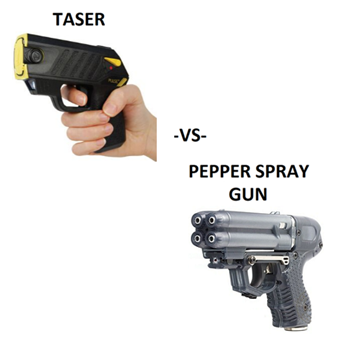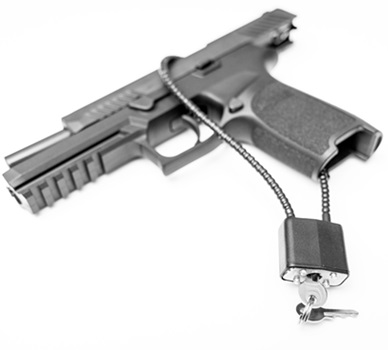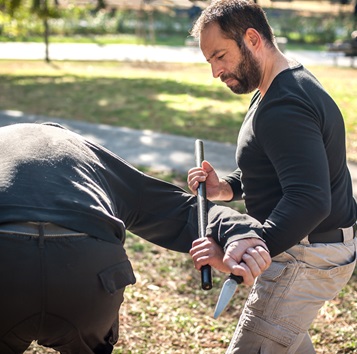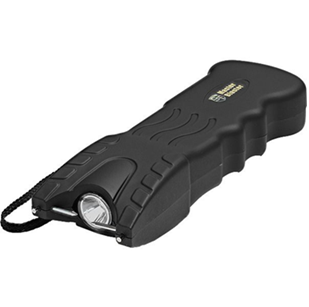Understanding the Mindset of an Attacker: How to Stay One Step Ahead
 When it comes to self-defense and personal security, knowledge is power. While physical training and awareness of surroundings are crucial, understanding the mindset of a potential attacker can provide a significant advantage. By anticipating how an assailant thinks and operates, you can stay one step ahead, making yourself a less likely target and responding effectively if confronted.
When it comes to self-defense and personal security, knowledge is power. While physical training and awareness of surroundings are crucial, understanding the mindset of a potential attacker can provide a significant advantage. By anticipating how an assailant thinks and operates, you can stay one step ahead, making yourself a less likely target and responding effectively if confronted.
The Psychology of an Attacker
To comprehend the mindset of an attacker, it's essential to recognize that not all attackers are the same. However, many share common psychological traits and motivations that drive their behavior. These include:
-
Opportunism: Many attackers seek out vulnerable targets. They often observe potential victims to determine if they are easy prey—someone distracted, isolated, or unaware of their surroundings. This opportunistic behavior is driven by a desire for quick, easy gains with minimal risk.
-
Power and Control: Attackers often seek to exert dominance over their victims. This need for control can stem from various psychological factors, including past trauma, feelings of inadequacy, or a desire to assert authority. The act of attacking can provide them with a sense of power, which they may lack in other areas of their lives.
-
Desperation: Some attackers are motivated by desperation, whether due to financial struggles, addiction, or other pressures. This desperation can lead them to take risks they might otherwise avoid, making them unpredictable and dangerous.
-
Rationalization: Attackers often rationalize their actions, convincing themselves that their behavior is justified or that the victim "deserves" it. This self-justification allows them to carry out the attack without overwhelming guilt or remorse.
-
Predatory Behavior: Certain attackers exhibit predatory behavior, carefully planning and executing their attacks. These individuals may stalk their victims, study their routines, and look for the perfect opportunity to strike. This methodical approach makes them particularly dangerous, as they are less likely to act impulsively and more likely to have a well-thought-out plan.
Identifying Potential Threats
Understanding the mindset of an attacker is only the first step. The next is identifying potential threats before they materialize. Here are some practical ways to recognize and avoid potential danger:
-
Trust Your Instincts: Your intuition is one of your best defenses. If something feels off, trust that feeling. Often, your subconscious picks up on subtle cues that something isn’t right, even if you can’t immediately pinpoint what it is.
-
Observe Behavior: Pay attention to the behavior of those around you. Someone who is loitering, watching others intently, or following you might be a potential threat. Sudden changes in behavior, such as someone approaching you after initially keeping their distance, can also be a red flag.
-
Look for Targeting Cues: Attackers often give away their intentions through body language. Signs like direct staring, positioning themselves in a way that blocks your path, or making subtle movements to close the distance between you and them can indicate they are considering an attack.
-
Stay Aware of Your Surroundings: Situational awareness is key to avoiding danger. This means being mindful of where you are, who is around you, and what is happening. Avoid distractions like your phone or headphones, especially in unfamiliar or potentially unsafe environments.
-
Recognize Pre-Attack Indicators: Certain behaviors are common precursors to an attack. These include clenching fists, shifting weight from one foot to another, scanning the area (possibly for witnesses or escape routes), and sudden changes in facial expression. If you notice any of these signs, be prepared to act quickly.
Strategies for Staying One Step Ahead
Now that you understand the mindset of an attacker and can identify potential threats, it's important to develop strategies to stay one step ahead. Here are some effective tactics:
-
Project Confidence: Attackers are less likely to target individuals who appear confident and in control. Stand tall, make eye contact, and walk with purpose. Confidence can deter an attacker who is looking for an easy target.
-
Create Barriers: Whenever possible, create physical barriers between yourself and a potential attacker. This could mean positioning yourself near other people, keeping objects like tables or benches between you and the threat, or even using a bag or umbrella as a shield.
-
Be Unpredictable: Attackers often rely on predictability. If you suspect someone is watching you or if you feel unsafe, change your routine. Take different routes, vary your schedule, and avoid patterns that could make you an easy target.
-
Have a Plan: Prepare mentally for how you would respond in a dangerous situation. Consider various scenarios—such as being followed, approached, or attacked—and think through your options. Having a plan in mind can help you act quickly and decisively under stress. Consider carrying a personal alarm to startle the potential attacker or alert nearby people for help.
-
Learn Self-Defense: While avoidance is always the best strategy, knowing how to defend yourself physically can be invaluable if you are attacked. Consider taking a self-defense class that focuses on practical techniques for real-world situations. Remember, the goal of self-defense is not to win a fight but to escape safely.
-
Use Your Environment: In an emergency, anything around you can be used as a weapon or a distraction. Keys, pens, or even a book can be used to defend yourself. Familiarize yourself with your surroundings and think about how you could use everyday objects to your advantage if needed.
-
Stay Connected: Whenever possible, keep someone informed of your whereabouts. Let friends or family know when you’re going out, especially if you’ll be in unfamiliar areas or out late at night. This ensures that someone knows where you are and can check in if necessary.
-
Be Ready to Run: Escape should always be your primary goal. If you sense danger, don’t hesitate to leave the area immediately. Running away is not a sign of weakness; it’s a smart strategy for avoiding harm.
- Arm Yourself with a Non-Lethal Weapon: Consider arming yourself with a non-lethal weapon such as a pepper spray, pepper gun, stun gun, Taser, or expandable steel baton.
Conclusion
Understanding the mindset of an attacker allows you to anticipate potential threats and take proactive measures to protect yourself. By staying aware, projecting confidence, and being prepared, you can reduce your risk and stay one step ahead of those who might seek to do you harm. Remember, the best self-defense is prevention—avoiding dangerous situations altogether whenever possible. But if you do find yourself in a threatening scenario, having the knowledge and skills to respond effectively can make all the difference.
Company Info
Customer Service
Product Information
- TASER® and Stun Devices Regulations by State
- TASER® Safe Escape Product Replacement Guarantee
- TASER® Comparison Chart
- TASER® User Manuals
- TASER® Warranty Info
- Byrna Product Catalog
- PepperBall Manuals & Spec Sheets
- Pepper Spray Laws
- Air Gun Laws
- States that Restrict Automatic and Butterfly Knives
- Our Print Catalog



































































